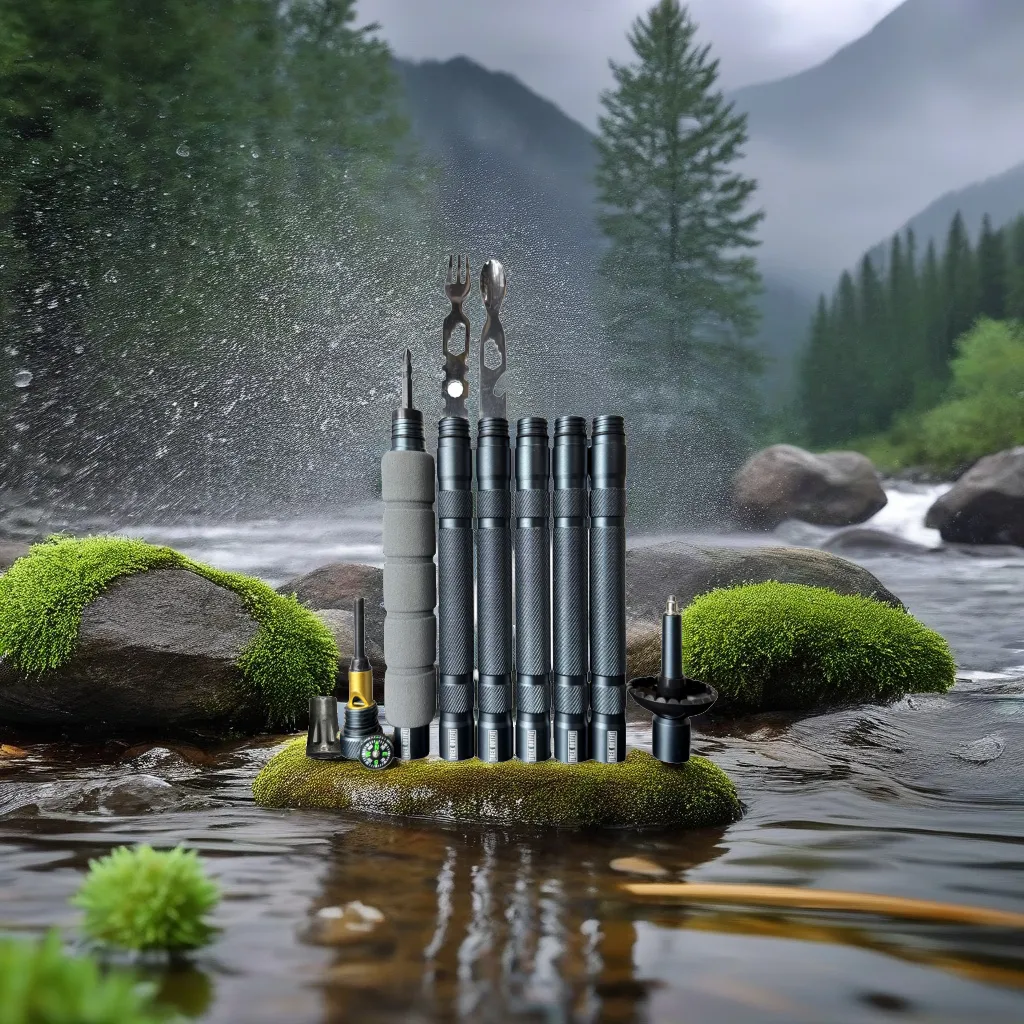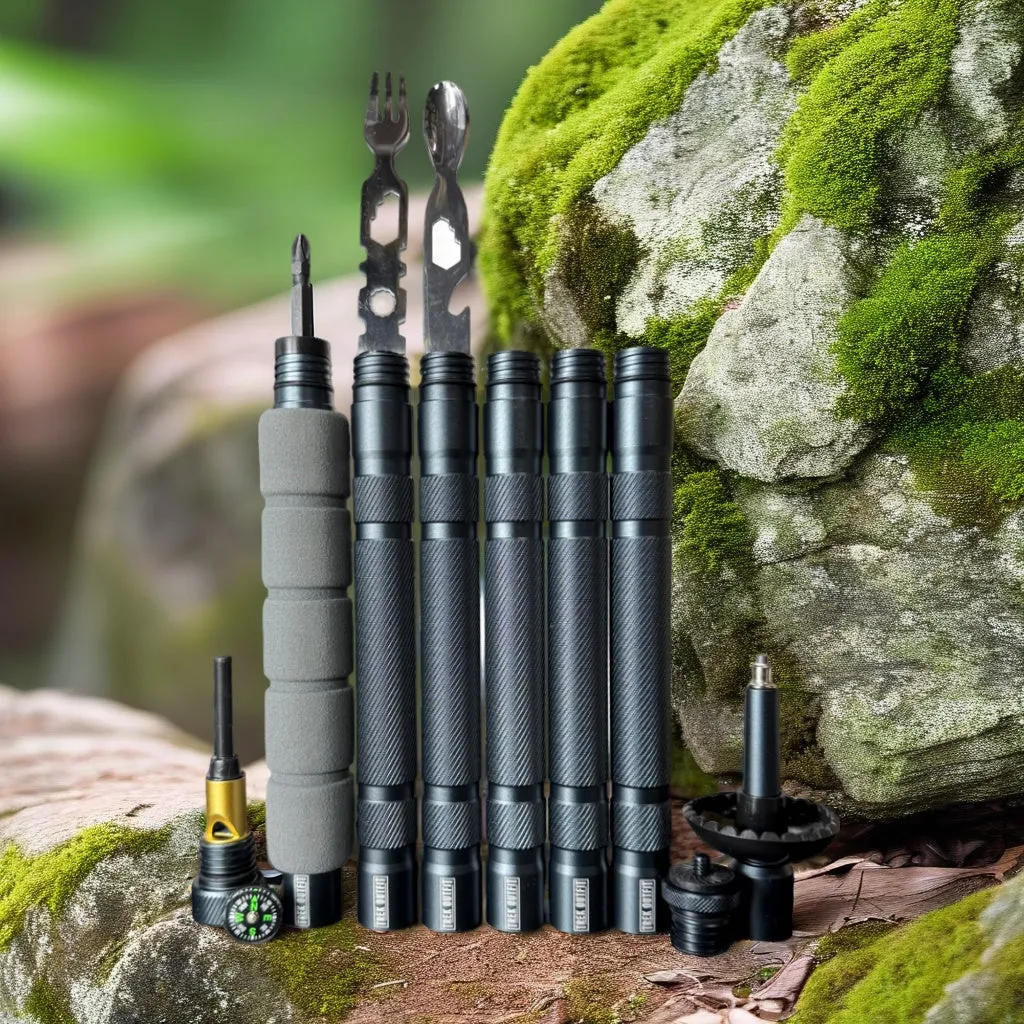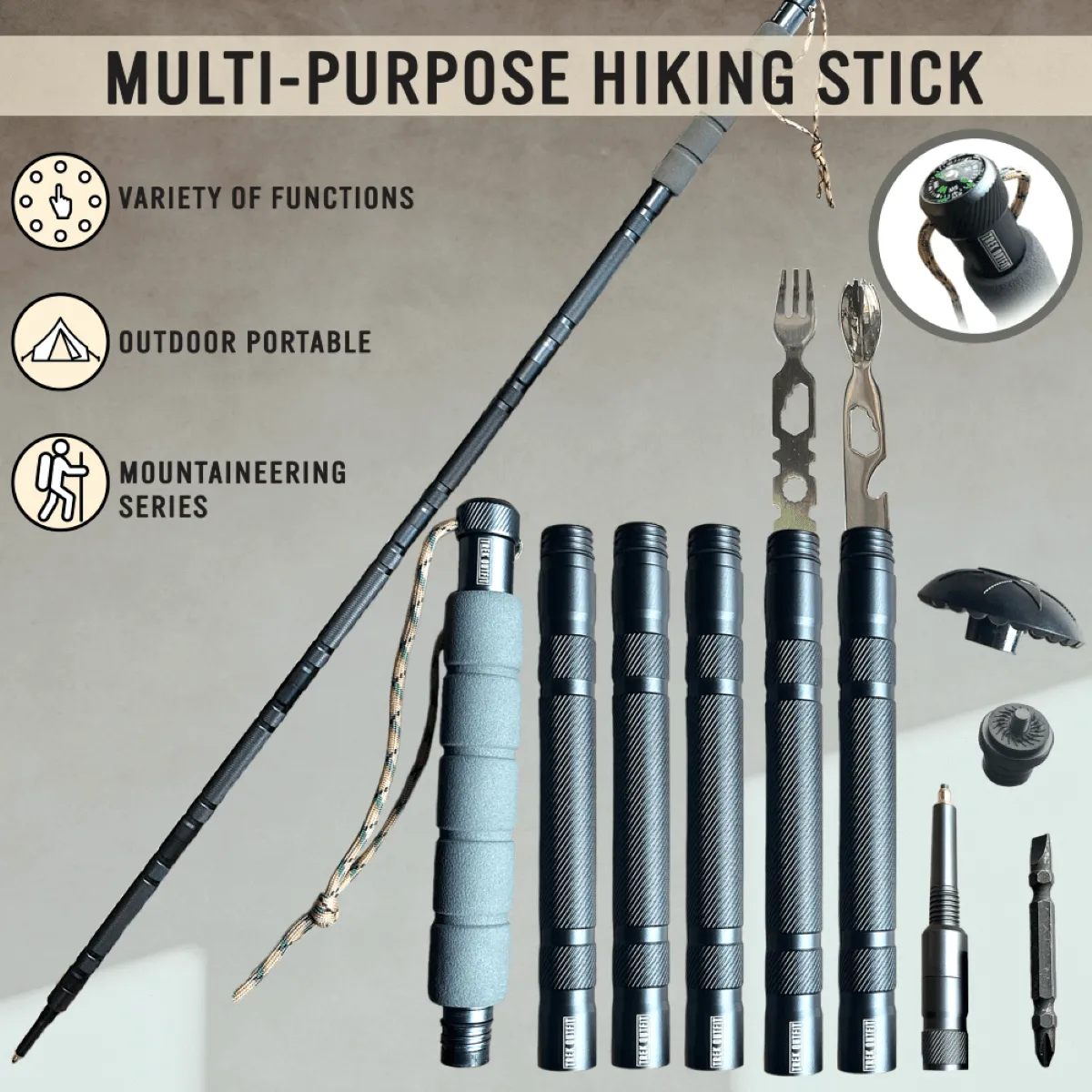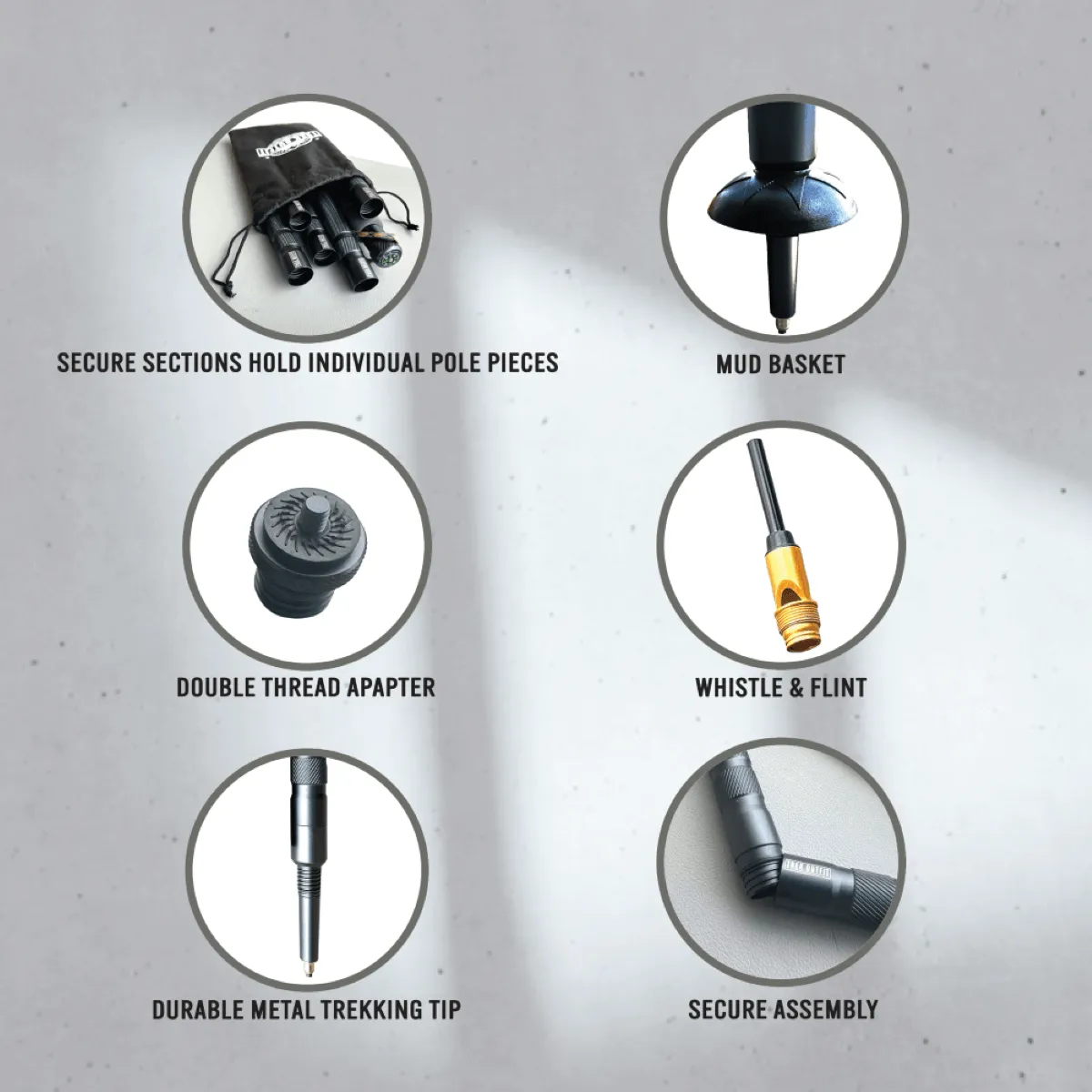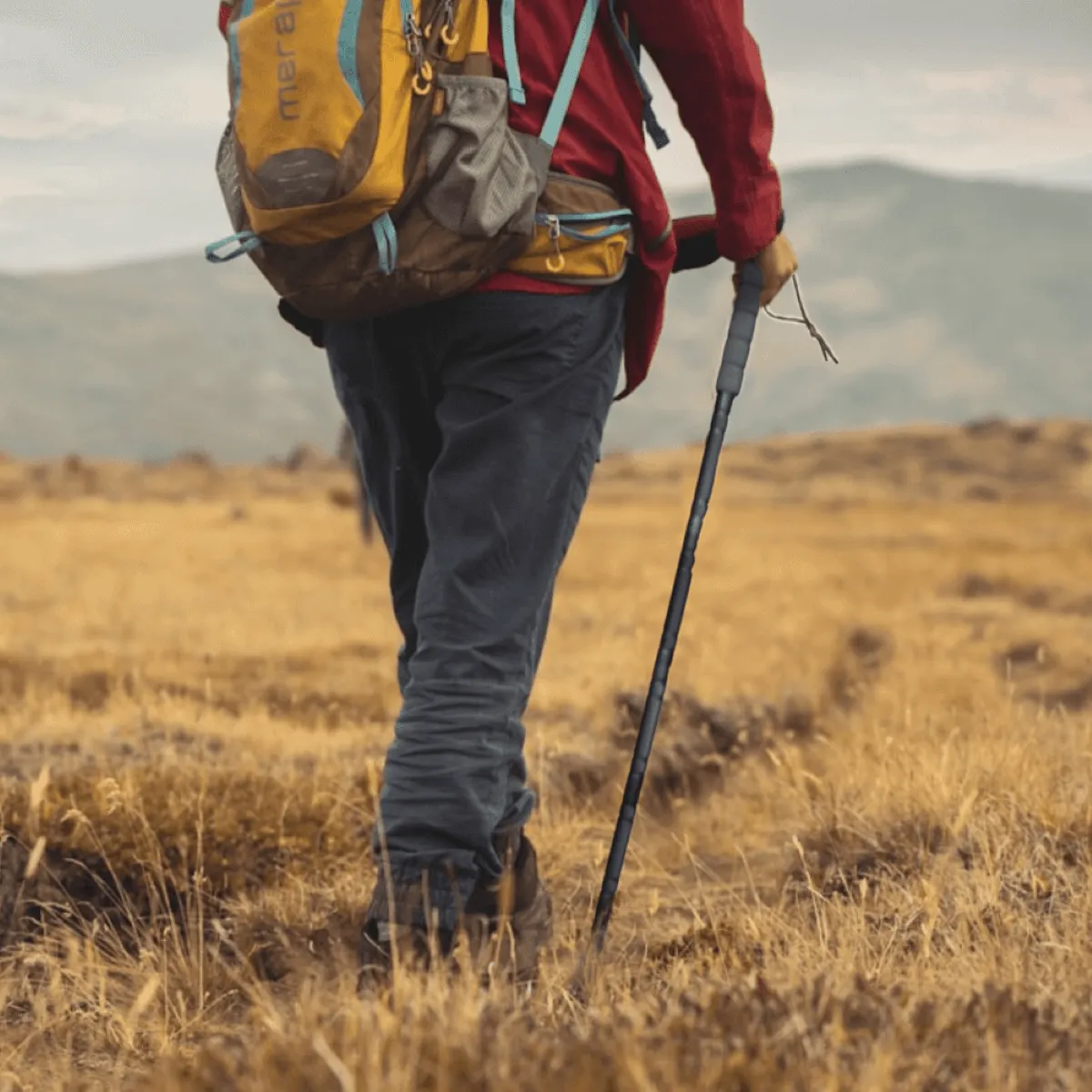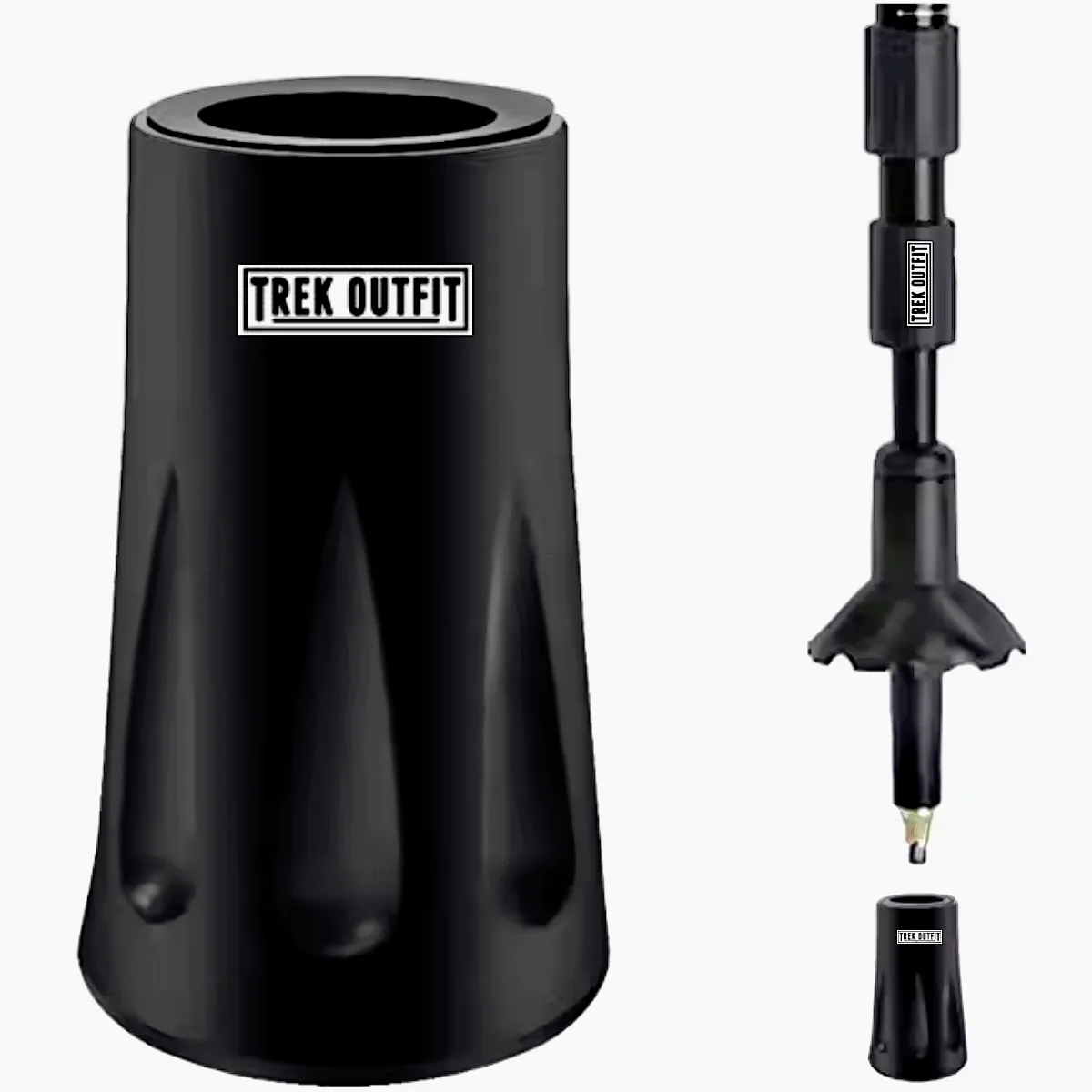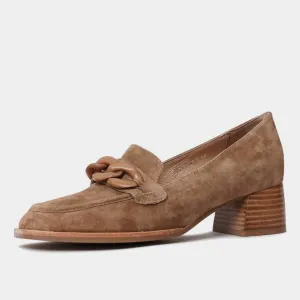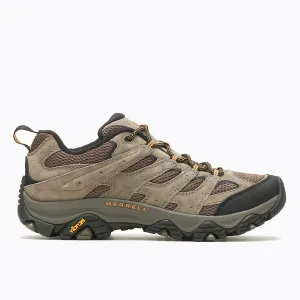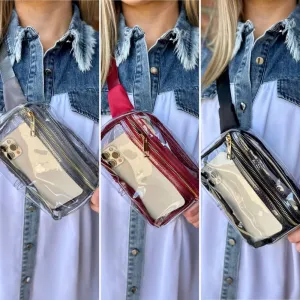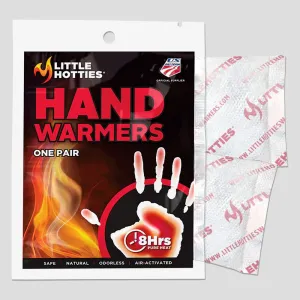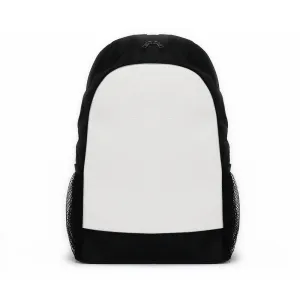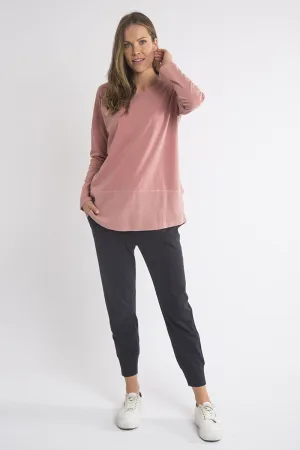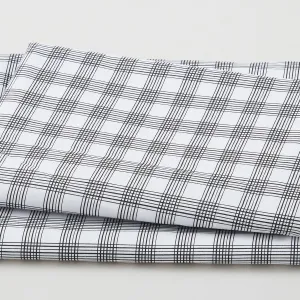Compass Tactical Survival Hiking Stick with Rubber Boot Tips
Overview
Gear up for your next adventure with Trek Outfit’s Compass Tactical Survival Hiking Stick. Built for durability and designed for versatility, this hiking stick is your trusted companion for rugged trails, urban paths, and everything in between. With a built-in compass and essential survival tools, this lightweight stick offers both functionality and convenience to enhance your outdoor experience.
Featuring an ergonomic EVA handle for superior comfort, an adjustable aluminum shaft for versatility, and rubber boot tips for added grip and protection, this hiking stick adapts to your needs with ease. Whether you’re navigating challenging terrain or taking a casual walk, it provides the stability and support you need.
Equipped with a range of survival tools including a flintstone, whistle, spoon, fork, and more, this hiking stick ensures you’re prepared for any situation. The durable rubber boot tips are perfect for maintaining grip on hard surfaces and protecting your stick during intense use.
Elevate your trekking experience with this multi-functional hiking stick—durable, lightweight, and designed for adventurers.
Key Features:
- Built-in compass for reliable navigation
- Equipped with survival tools: flintstone, whistle, spoon, fork, and more
- Rubber boot tips for enhanced grip and pole protection
- Lightweight aluminum construction for easy portability
- Adjustable telescopic length up to 48 inches
- Comfortable EVA foam grip for long treks
- Compact carrying case for easy storage
Whether you’re trekking rugged trails or exploring urban paths, this tactical hiking stick combines functionality and reliability for every adventure.
Specifications
Features and Benefits
Designed for All Terrains
- Handle Grip Material: EVA Foam
- Body Material: 6063 aluminum alloy
- Tools Material: 3CR13 steel
- Tip Material: Carbon Tungsten Steel
- Color: Metallic Gray
- Adjustability: Telescopic pole with 6 sections, up to 48 inches (122cms)
- Additional Tools: Compass dial, Flintstone, Whistle, Spoon, Fork, Double head screwdriver, Ice breaker (tungsten steel tip), Mud Basket, Double thread adapter (0.25 inches to 0.78 inches), Rubber Boot Tips
- Packaging: Includes a compact carrying bag to store each section
- Weight: 1lb 2.2oz (516gms) (with all accessories)
Choosing Poles
Trekking Pole vs Hiking Pole
Trekking Poles:
-
Similar to Ski Poles: Trekking poles are similar to ski poles but are intended primarily for hiking and trekking. They often have hiking-specific features such as adjustable lengths, ergonomic grips, and wrist straps for improved handling.
-
Used in Pairs: Trekking poles are typically worn in pairs to give balanced support on both sides of the body, so distributing weight equally and reducing strain on knees and legs, particularly while carrying a backpack.
-
Versatile: The use of two poles provides increased stability and is especially useful on uneven terrain, steep descents, and while crossing streams.
Alpenstock or Hiking Staff (Hiking Stick):
-
Alpenstock: A single trekking pole, traditionally used for mountaineering and hiking to aid stability and balance over rough or steep terrain. It's chosen for its simplicity, effectiveness, and lightweight design, making it essential for seasoned hikers and climbers alike.
-
Single Pole: A hiking staff is a single pole that is commonly chosen due to its simplicity. It provides support and balance, especially over somewhat uneven terrain.
-
Simplicity and Tradition: Some hikers prefer a hiking staff because of its classic appearance or the ease of using a single pole. It can also be used for sweeping away foliage or as a monopod for photography.
-
Versatility and Preference: The decision between a hiking staff and trekking poles is generally based on personal preference, the nature of the terrain, and the hiker's individual demands.
Choice and Utility:
While most hikers and trekkers prefer the balanced assistance of two trekking poles, particularly for difficult terrain or long distances, some may choose a hiking staff for its simplicity or for hikes requiring less support. The hiker's physical condition, personal comfort with the gear, and the sort of hiking activity are all factors that can impact the decision.
The use of trekking poles or a hiking staff can considerably improve the hiking experience by adding stability, decreasing impact on the body, and even increasing hiking speed by using the upper body.




